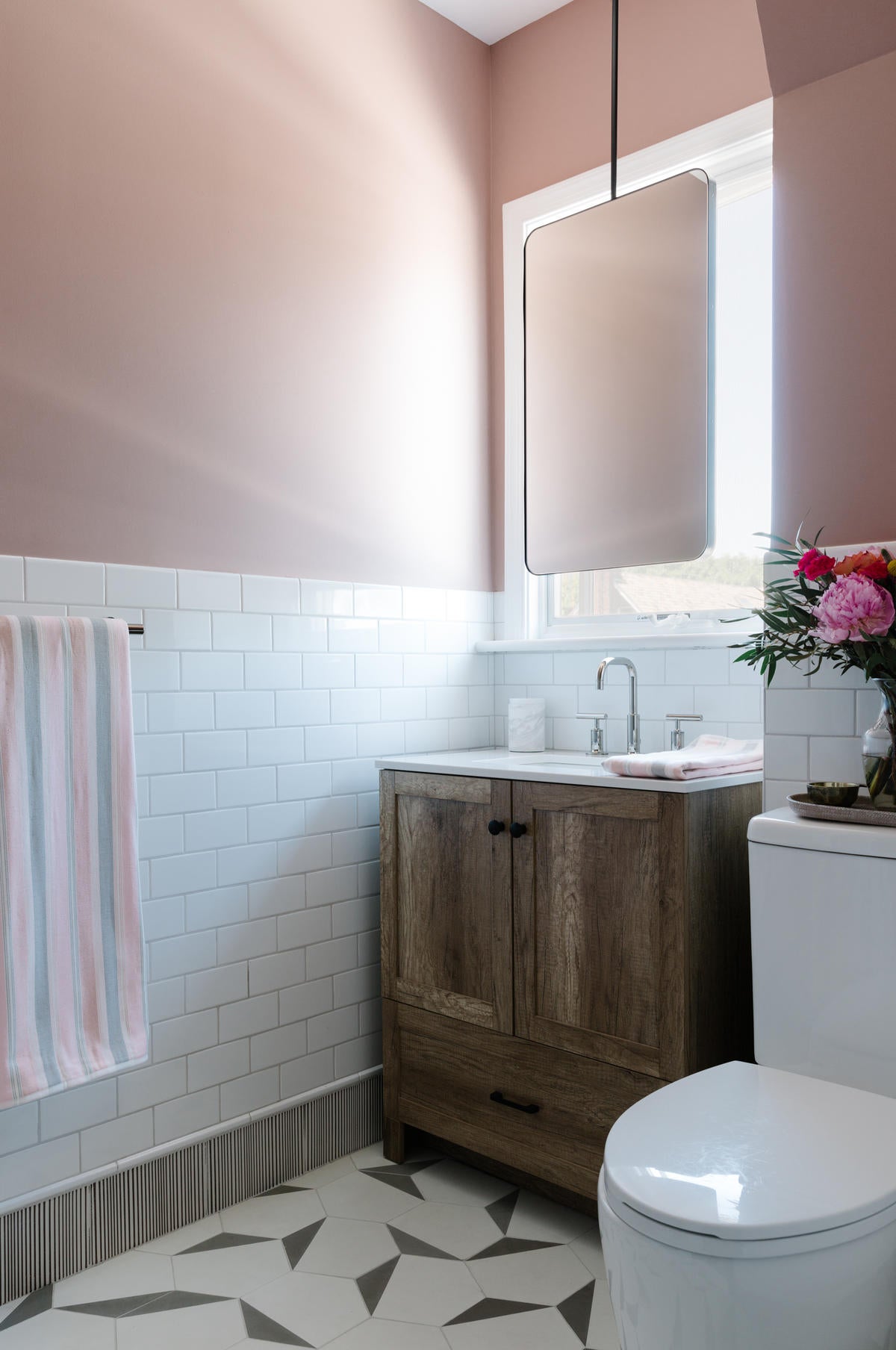By seeking out under-the-radar vendors (and getting flexible with how she charges for product), New York–based designer Eneia White is maximizing a high-low strategy to deliver her clients a custom look.

How do you approach shopping for your clients?
Before, when I worked at other high-end firms, everything was super custom, and it took 24 weeks, minimum, to do everything. My firm isn’t quite there, but I like finding new resources to keep in my back pocket for when we can go there. For a bathroom we recently completed, we needed a custom-sized mirror that got installed into the ceiling and hangs in front of a window. To commission that in New York would just be obnoxiously expensive, but we found a small company in England that only does custom mirrors, and it was great. You can get really cool things for a fraction of the cost, but you have to really dig and do the research. My colleague Jessica and I will sit on the train and go down a rabbit hole for 40 minutes, finding these makers in the middle of nowhere that only have 12 followers on Instagram—maybe one other designer follows them and no one else really knows about them yet. Those are some of our best resources.
Is there a strategy around which brands you choose to shop with?
There are some pieces that clients want to say they have in their homes, like that Apparatus cloud chandelier. It’s like the Louboutin red sole of interior design right now—a status symbol in the living room. For everything else, we’re looking for products that are so customizable that anything’s possible, where the lampshade or side table could be in any Sherwin-Williams color you want—brands that make it easy for us to have a unique look. That way, even if everyone else is using this source, it’s only ever going to look like an Eneia White Interiors piece, because we made it pink or aqua.
Does access to certain pricing levels make you more inclined to work with a given brand?
It does. Not having an opening order minimum is big for us, because we do like spaces to feel collected. If it’s a $10,000 opening order—sure, we can source $10,000 worth of product in the home, but we don’t really like that look. We’re having conversations that are like, “How much do we have to spend as an opening order with you? Can it be over the course of a year, and we’ll keep coming to you for different projects?” I get a little annoyed with anything over $30,000, though—I don’t want to be selecting things just to be able to place an order.
Are there brands that you have struggled to access because they have a steep minimum?
There’s an upholstery vendor with an opening order of $10,000 or $15,000—which, again, is doable, and the client’s happy. But the way we work, we’re going room by room. By the time we hit that $15,000, we’re going to be knee-deep in the fifth space—and we can’t place an order for any of it yet because we haven’t gotten there. So that’s a deterrent for us, even though they have a nice product with a good price point.

Is there a workaround for that?
You can use one of those purchasing houses to buy it for you. But that gets a little scary for me because they could literally just take your money and run—and then what do you tell your client?
Have you tried purchasing groups to access certain vendors?
I did early on, but I was a little turned off by the experience. It was for a really nice client in the Hamptons. Some of their things arrived broken, but we didn’t discover the damage until after the return window had closed. I couldn’t argue with them, because they’re not the brand; they just have an agreement with the brand. It got a little messy. It ended up being a lot like buying a plane ticket with Expedia: You should just go [to the airline] to buy the ticket. That’s how I felt about it. But we learned that the hard way.
How do you keep track of the vendors that you want to try out?
We have a love list—a Trello board with columns that read, “Tiles we love,” “Fabrics we love,” “Lighting we love,” and so on. When we start a new project, or if we have to reselect something, we’re always referring to that list, which has a link and an image so we won’t forget about it. We also have a basket in the office to collect items we love. Or sometimes, we look at something as it comes in and we’re like, “Oh, let’s save this for so-and-so.” If it’s a wallpaper or a tile, we’ll try to build around it. We’ll take it with us to a meeting—and if they’re not into it, we tell them, “This is something we love, so if you don’t like it, you’re going to see it in a year, because we’re going to keep bringing it to every meeting until someone says yes.” I think they like hearing that, because they’re like, “Oh, they’re only using things they’re, like, dead over.” Which is the reason you’re calling us—or it should be.
This article is part of a series of interviews that explore different approaches to shopping, offering tips and strategies to make a firm’s sourcing more efficient, more inspiring—and more profitable, too. Want to read more? Explore the rest of the series here.



































